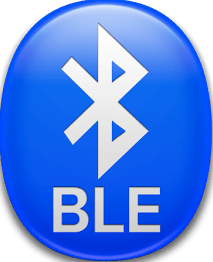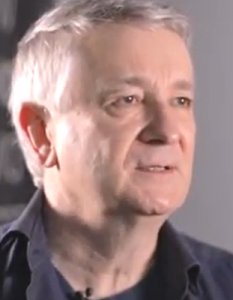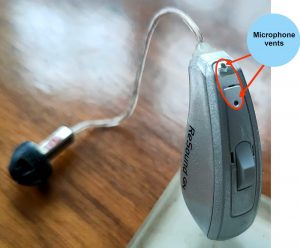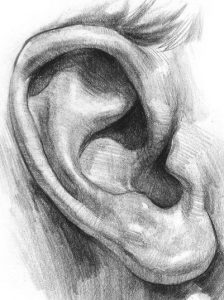Two important things have happened since we published part two of our review of the ReSound LiNX Quattro. And the changes have obliged us to go back and add a correction or two.
Firstly, the much anticipated arrival of Goggle’s ASHA (audio streaming for hearing aids). Secondly, the announcement of the new Bluetooth 5.2 standard. This adds Low Energy Audio streaming (LE Audio), a significant development that includes… audio streaming for hearing aids.
The big mistake was to assume that the former was a subset of the latter. ASHA and LE Audio are only very distant cousins.
The LiNX Quattro meets the Pixel 3a
AN OVER-THE-AIR (VIA THE SMART 3D APP) update to the LiNX Quattro firmware last December prepared the hearing aids to receive Google’s new version of Bluetooth audio, ASHA.
Transmission of this audio requires Android 10, the newest available version of the Android operating system and in February of this year Google very kindly sent Tested Technology a Pixel 3a phone running this version.
We’ll report on this in part 3 of the LiNX Quattro review.
The Bluetooth SIG development came as a total surprise. At a meeting in early March organised by the Bluetooth Hearing Aid Working Group I learnt that the new standard they had been developing for Bluetooth 5.2 included a radical update to the Low Energy (LE) implementation.
ASHA and LE Audio

Bluetooth Low Energy (BLE) was incorporated into Bluetooth version 4.0 ten years ago. As its name implies, it was designed primarily to save power. Without sacrificing range, the standard uses lower bandwidth and omits some of the functions of the “Classic” full implementation. One of these omitted functions was audio streaming.
Wireless audio streaming wasn’t a big thing back then. But times have changed and when Bluetooth audio streaming (using Classic Bluetooth) began to burgeon there was a scramble to re-engineer BLE to make it fit for this purpose. Battery life was becoming an issue, particularly as the Bluetooth receiving devices (“sinks” in the technical jargon) became smaller and smaller.
As it turns out, it was a double-barrelled scramble between two factions: the Bluetooth Hearing Aid Working Group on the one hand and Google’s Android Accessibility Group on the other.
The Inside Story
Because of this, the EHIMA seriously underestimated the time it would take, believing that a new standard could be completed in around 18 months. Seasoned open standards developers know that a project of this size will more likely need five to seven years.
Tested Technology understands that around three years into the project, GN (the Danish holding company responsible for the LiNX Quattro) grew restless and turned to Google for help. GN sources confirm that while the EHIMA’s Bluetooth work continued, in 2018 Google and GN began the ASHA project as a safety net.
Google at the time was a member of the Bluetooth SIG. So at least some of the Google engineers contributing to ASHA had also been working on the new official Bluetooth SIG LE Audio standards. They will have realised that the EHIMA’s original timescale was absurd but must also have felt the pressure ASHA was now under to catch up from a standing start.
This is probably why, measured against the very much wider goals of LE Audio, ASHA offers only a subset of functions, limited even within the domain of hearing aid applications. Sources suggest, however, that the existence of Google’s ASHA endeavour lent wings to the official Bluetooth SIG development, speeding finalisation of the LE Audio specifications.
LE Audio’s current “Mission Accomplished” was probably a little premature—you will always hear the march of the marketing music before the parade actually arrives on the street. But (SARS-CoV-2 permitting) we can expect it to appear in strength this year.
Once LE Audio is ubiquitous in smartphones, wireless speakers, headphones and hearables in general it seems reasonable to suggest that ASHA will go the way of many other brave Google ventures (Google Glass, Google Plus, Google Hangouts spring immediately to mind, but there are many more…).
Meanwhile…
ASHA works. ReSound’s holding company, GN, backed this Google/Android venture from the start, promising “the world’s first streaming Android hearing aids” with the launch of the LiNX Quattro in 2018. The promise of Android streaming has finally come true, although the LiNX Quattro was pipped at the post by Phonak’s Audéo Marvel, which jumped the gun by using Classic Bluetooth.

Along with GN, another backer of ASHA is the manufacturer specialising in cochlear implants
With the firmware update of December last year and with the right smartphones, currently limited to Google’s own Pixel range and one or two Samsung phones, all updated to Android 10, the ReSound LiNX Quattro can be paired directly to the Bluetooth output to receive the phone’s audio output over BLE.
Android thus achieves what Apple was able to offer to its own users six years ago. The very wide range of “Made for iPhone” compatible hearing devices actually includes the LiNX Quattro, one of the first hearing aids to offer this capability. Android has a lot of catching up to do on this front.
LE Audio will be rolling out this year in Bluetooth 5.2. Will it be compatible with today’s Bluetooth hardware, designed for Bluetooth 5.0? Bluetooth SIG members tell me the answer is “yes”, with an appropriate firmware update. The caveat is that Bluetooth 5.2 will come with its own new generation of hardware, designed to handle LE Audio more efficiently.
The crunch point will be in the hearing aids. When you stream to your hearing aids using an intermediate streaming device, as you can with the LiNX Quattro, standard Classic Bluetooth is handling the first leg of the journey. The connection between the streaming device and your hearing aids will use a proprietary (read “kluged by the hearing aid manufacturer”) adaptation of BLE. Whether the hardware handling this connection can be firmware updated to LE Audio is the big question. And the answer may well be No.
All the above applies equally in the case of the LiNX Quattro’s proven ASHA connection. With one difference that might be significant: Google’s ASHA implementation isn’t a proprietary kluge. It’s an open source kluge. This suggests that if the hearing aid manufacturer has based its ASHA on Bluetooth 5.0 hardware it may be firmware updatable to handle LE Audio.
Hats off to Google (and the Bluetooth SIG)
Effectively, what Google has done is to provide an open source, free for all workaround in answer to Apple’s proprietary adaptation of BLE. Apple is famous for designing its own software and hardware standards and hugging them tightly to itself.
In fairness, though, this unsharing ethos has largely informed the hearing aid industry too. This seems very likely to change over the next few years as hearables in general mature into commodity items in much the same way as the personal computer industry in the late ’70s and early ’80s.
Of course, nobody should expect the huge amount of human labour and ingenuity put into development like this to go unrewarded. But there are industry-standard ways of opening up a new resource like power-saving audio streaming to the whole world while still retaining an income stream in return.
However, as with all existing Bluetooth products, components and end-user devices will have to be qualified against the Bluetooth SIG’s specifications before they can carry the branding. Currently, this will cost manufacturers $4,000 for each product range.
Obviously, vendors of popular consumer products will do rather better out of this deal than specialists like hearing aid manufacturers selling into a much smaller market. But even so, for them this should amount to only a few cents for each individual product. It’s the end user, of course, who ultimately foots the bill. But the incremental cost of what in this case is a huge benefit will very likely be invisibly small.
No Conferring

Not only are ASHA and LE Audio completely different ways of adding audio streaming to Bluetooth Low Energy, they have each been developed with no relation at all one to the other. The two development teams haven’t even been in discussions over the past years it’s taken to develop these standards.
Why did these two development strands fail to coordinate their efforts?
I had occurred to us that as Android’s contribution was to be open source and the Bluetooth SIG’s development (although RAND-Z, see above) largely comprised proprietary intellectual property, this “Chinese Wall” was something Google would have to insist on. It would be crucial to ensure the resulting code was “untainted”.*

Nick Hunn is Chair of the Bluetooth SIG Hearing Aid Working Group and a passionate industry evangelist. He coined the term “hearables” to describe the upcoming (and now ongoing) fusion of hearing aids and consumer audio. His blog “Creative Connectivity” is a must-read for anyone who wants to understand the (still largely unexplored) opportunities of wireless technology.
*We haven’t been able to persuade Google to confirm or deny this guess. In fact, Google’s response to all our enquiries about ASHA has been a series of dull thud “no comments”.
This is very unusual for any open source development and seems to lend strength to the view that ASHA, at best, is only a stepping stone to the future of wireless audio.
NFMI versus Bluetooth LE
Tested Technology has been something of an evangelist for NFMI (near field magnetic induction) as a means of communication between two associated hearing aids but also as a technique to support body area networks (BAN) in general. The advantages over Bluetooth in these contexts seemed compelling.
There was a suggestion at the Bluetooth SIG meeting that in the light of what LE Audio has been able to achieve, NFMI may be approaching the end of its short but very secure rope. NFMI operates in the low megahertz range using a form of wireless transmission very similar to the familiar telecoil. This gives it the key advantage of being able to travel from ear to ear across the brain without being significantly obstructed by the living tissue or risking harm to it.
Personally, I remain to be convinced about this. The higher the frequency, the less able the signal is to travel through material and the more direct the path needs to be.
True, Bluetooth uses WiFi’s 2.4GHz band which is less directional and more penetrative than WiFi’s other 5GHz band. And it may be that in the lab, with specially designed (and probably obtrusive) aerials, BLE 2.4GHz could be shown to allow enough “bend” to travel round the outside of the skull. Reflections of the signal off exterior objects like walls and ceilings could help here. But the system would have to work in the open as well.
In any case, low energy Bluetooth transmission between a pair of hearing aids will be rather less power efficient than NFMI, which requires impressively little juice. But as hearable devices become smaller and smaller, manufacturers would be happy to save space and complexity by omitting NFMI and using only a single hardware radio system*.
Devices that are purely sinks for audio streaming will certainly be able to get along without NFMI. Bluetooth LE Audio transmission embeds synchronisation signals. This scheme allows two separate streams, one to each earpiece, to be synced to within 20 microseconds. Using this system, there’s no need for the individual receiving devices to intercommunicate.

But hearing aids do more than receive streaming radio. Microphones to pick up atmospheric sound waves are obviously crucial. And they’ve become very sophisticated. Typically there will be a pair of microphones in each hearing aid, each microphone receiving similar information at very slightly different times.
Tiny time intervals like this are the clues the brain needs to pin-point the various sounds in the surroundings and, if necessary, to distinguish between useful information (like speech) and background noise. Instead of several microphones, the unaugmented human ear uses the multiple reflections off the convolutions of the pinnae to derive this information.

The folds aid directionality
For the hearing impaired, the four microphones in the twin hearing aids seek to emulate this. But to do so, all four microphones need to pool their data and will therefore have to intercommunicate.
With a fast and reliable wireless connection between the hearing aids and a sufficiently speedy processor it’s possible to derive up to eight virtual microphones—four stereo pairs— from these data. An NFMI interconnection remains the best way to do this.
For this reason, it seems unlikely that LE Audio will see off NFMI as the standard for hearing aid intercommunication any time soon.
Summing Up
Much of what I’ve written here is speculation, based on research, marketing material and discussions with experts in the field. On balance, I’m concluding that the next wave of hearing aids from the major manufacturers will be built around Bluetooth 5.2. The GN/Google ASHA enterprise will become a historical footnote.
But, to borrow Bertrand Russell’s summary of young Wittgenstein’s philosophy of the future: “That the sun will rise tomorrow is a hypothesis.” Bill Gates may have seen the present coronavirus crisis coming. But did you? Did I?
In truth, all we have is the present. ASHA is here now and it works. How well, and with what limitations, we set out in part 3 of our LiNX Quattro review.
Chris Bidmead 2020/03/12

This is a great article but it left out to my mind the one thing that stops ASHA from audio streaming my phone to my Cochlear Nucleus 7 processors.
M y phones Bluetooth chip set manufacturer has not implemented ASHA in the Bluetooth chip of their Android 10 phones and have issued no confirmation if they will support ASHA in future Android versions. That’s from a phone manufacturer that is one of the big 4 of North America and the UK.
It has to be down to money payable to Google as the only phones that will ASHA work are Google Pixels, some Samsung S models and the IPhones. Min prices for the phones start at £600 UK.
Cochlear as you point out are one of the developers of ASHA. I do not know if they will ever move to Bluetooth 5.2 LSE or even if Cochlear Firmware will be made available to change the method of receiving audio streaming. I cannot take the implants out of my head, only upgrade the processors if and only if, Cochlear allow it.
ASHA streaming is an all too rare feature, I fear, Ian. Of the many phones here at Tested Technology, only one—the Google Pixel 3—supports the protocol.
I don’t believe this has anything to do with charges for the technology by Google; it’s more likely to be because of the imminent prospect of Bluetooth 5.2 which will cover the functionality of ASHA and more.
I understand that devices like the implants you have may possibly be firmware upgradable to Bluetooth 5.2 but Cochlear should be able to give you a definitive answer on this.
I’d be interested to know whether regular Bluetooth headphones/earbuds provide decent hearing via your implants.
–
Chris
Thnx for this article. Over a year later now and I know of only 3 phone brands that actually know ASHa, as listed on the site of Oticon. Too bad. Phonak does a fantastic job on bluetooth classic by the way. Used it and it works nearly flawless.
Nonetheless this is kind of disturbing.
Eric, full marks to Google for pioneering ASHA and at least including it in its own Pixel phones as well as—as you say—a few other manufacturers. It does look as though Bluetooth 5.2 will become universal and will make ASHA redundant fairly soon. So I’m not as disturbed as you are about this. I hope Tested Technology will be able to report on these developments as they occur.
–
Chris
Hi. Very interesting article. Its July 2023 now and I cannot find out from Samsung if any of their Tablets advertised as bluetooth LE can connect to my resound linx quattro asha hearing aids.
Don’t they know the abilities of their products?
It does seem, David, that interest in ASHA has waned. I think it’s dubious that the new versions of BLE (5.1 and 5.2) will be able to connect to ASHA-enabled devices. Whether ReSound will be able to upgrade the LiNX Quattro firmware to cope with BLE is a question you might want to put to them.
—
Chris
Thank you very much for this article, I am interested in this topic because of my sons using hearing aid on one ear and cochlear implant on second ear. So I found Resound cooperation with Cochlear very useful, now I see that this cooperation based on ASHA doesn’t seem to be solution for long time and will be replaced sooner or later by other technologies/protocols.
Please keep us informed about farther development, I really appreciated your work
David, I did write that the ASHA technology will probably eventually be supplanted by Bluetooth 5.1. What I meant by that was that the planned proliferation of ASHA is going limited because the new Bluetooth solves the problem that ASHA was designed to solve. But devices already using ASHA will continue to work with other devices they’re paired to and (in the case of Google Pixel phones) will do so at least for several generations to come.
–
Chris
Hi, first of all, nice article!
I have a pair of resound quattro, and my circunstances for witch I choose it, was the battery.
I bought a xiaomi device (note 9S) thinking that finally asha was implemented in the pone, but unfortunately, didn’t happen. I see in another brand with ASHA technology, support mi10t/pro.
I have a little hope…but this wait is eternal.
I have a question: if I change my phone, to new BTE 5.2 LE when arrived, it could work?
As I understand it, Ramon, all the functionality of ASHA (and more) is incorporated in Bluetooth 5.2. For this to be useful, though, both the source and the sink (the phone and the hearing aids) will have to support Bluetooth 5.2. The Quattro LiNX doesn’t support Bluetooth 5.2, only ASHA. You will need a phone that supports ASHA and as far as I know this is only Google Pixel phones and some Samsung phones.
—
Chris
Thanks for the great articel! It would be useful to see the date of it to be able to judge how up-to-date its contents are. Is there a way to see the date of publication?
Tamaz, I’m really grateful to you for pointing out this important shortcoming of the Tested Technology Pages section.
Entries in the Posts section are automatically dated as they appear in the index. The Pages section is accessed through pull-downs on the main page, so their publication dates are not displayed. Until I saw your comment I had entirely overlooked this.
I believe that dating Internet articles is not only useful (as you politely put it). It’s essential and should be mandatory across the Web. So I’ll be going through all the Pages pieces to ensure publication dates are displayed.
There is a way of getting some clue to the date of an article even though this isn’t shown. Most browsers allow you to inspect the underlying code of any page (something like “View Page Source” which may be under a main heading “Developer Tools”). Search the code for “article:modified_time” and you should find the date on which the article was last edited.
—
Chris
After reading this article I am a bit clearer what ASHA is, but do not have answers to my problem/question.
My wife’s hearing aids use ASHA, and the manufacturer lists Galaxy S9 – S21 with Android 11 as compatible. My wife’s Galaxy A71 is not listed.
But the HA app on her phone can communicate with the HA over BT, and she can stream music from her phone directly.
The only problem she has is that the app on her phone loses the pairing or something, so it is unreliable. It has to be fiddled with to establish the connection again.
Now, the HA manufacturer puts the blame on her Galaxy A71.
Is it possible that the ASHA or whatever protocol involved is different on the S series phones and the A series phones? All of the phones mentioned run or can run Android 11, and have BT 5.0 version.
I am sceptical of what the manufacturer says. But I could be wrong.
What do you think?
Joe
Joe, I think we have to face the fact that ASHA didn’t turn out to be what Google hoped it would be (me too). It certainly hasn’t been universally implemented in Android 11. Your wife’s hearing aid manufacturer implemented ASHA in good faith and, yes, it does work reliably with several of today’s phones, including the Google Pixel 3 we have here. But, broadly speaking, I think we have to write off ASHA as a temporary bridge on the way to Bluetooth 5.2, which I believe will become widespread.
In practical terms, I’ve discovered that although ASHA allows me to stream Bluetooth directly to the ReSound LiNX Quatto, I don’t use this feature. Open dome hearing aids aren’t designed to reproduce Bluetooth music and the bass frequencies are lost through leakage. Receiver in ear hearing aids don’t interfere with regular Bluetooth headphones or even with many earbuds. For hearing aid users who are uncomfortable with headphones or earbuds I’d very strongly recommend something like the BeHear Proxy near-field shoulder speakers, which I use on a daily basis.
—
Chris
Chris, Thanks for this thread. I’ve just found it, but have been following the Bluetooth SIG newsletters, since I have a Cochlear N7 and am interested in the future of Bluetooth. Hoping you’re still following this and can answer some questions for me.
1) I’m aware that Cochlear uses Resound’s accessories (which apparently are not Bluetooth LE) and both Cochlear and Resound can stream directly from Apple phones and tablets and some Samsung and Pixel phones (and maybe tablets?), but am I correct that Resound’s direct streaming to it’s aids is actually ASHA and not Bluetooth LE?
2) Regarding the future, one of the pots of gold at the end of the rainbow would appear to be Broadcast capabilities with enough range to support most theaters, movies, churches and eventually obviate loops and telecoils. Other pots of gold that are perhaps easier to implement include audio sharing, and true hands free (requiring the hearing device to transmit the speaker’s audio back to the phone). Finally, another really interesting Bluetooth SIG plan includes expanding sinks to include headphones and earbuds … making assistive listening a true consumer affair by including hearing people, which would be a game changer especially in a broadcast situation. Bluetooth SIG seems confident that they’ve got these covered, so my question is does ASHA have plans to eventually support longer range broadcast to many … or to make assistive listening apply to hearing people, too?
Thanks back to you, John, for your comments. I’ve taken a while to respond as I’ve been asking around. As Resound came out with the product well ahead of the Bluetooth 5.2 announcement, I have confirmation from experts that this is the case: the Cochlear N7 is ASHA not Bluetooth 5.2.
My response to your other question, again backed by expert advice, is that ASHA has indeed — as predicted in the article — joined the other Gone Google products. I’m sorry to report that I don’t think we’ll hear much more about it, now that Bluetooth 5.2 is set to become ubiquitous.
—
Chris
Great article. I have been trying to find out IF (and when) the hearing aid makers will adopt bluetooth 5.2. From what I have seen there does not appear to be any hurry by the makers to do this. My read on it is that Opticon may have 5.2 out in a year or so but that all of the other makers will be many years until they migrate to 5.2. Is this your take on the situation or do you have any insight that indicates the hearing aid makers are working on 5.2 more than what I see?
Oticon may well be first in the field, Brian. But, as you say, there seems to be inertia from the hearingaid manufacturers. Perhaps because Bluetooth 5.2 democratises this important aspect of what, up to now, has been a specialist business with a high entry price.